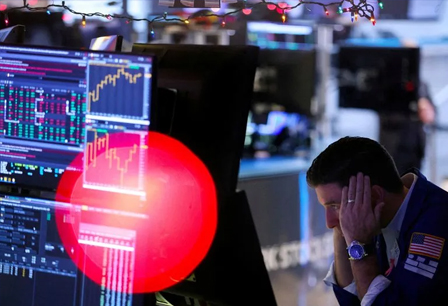This year's Jackson Hole monetary policy conference, which will feature a speech from Federal Reserve chair Jerome Powell at 10:05 a.m. ET on Friday, seems designed to be a downer for the S&P 500. The topic of the conference, "Structural Shifts in the Global Economy," implies something has changed — and not for the better when it comes to inflation.
Is The Era Of Low Inflation Over?
Covid-induced supply-chain failures, the fiscally fueled boost to consumption and Russia's invasion of Ukraine were the major culprits behind inflation's worst breakout in 40 years. Yet economists have come to think that other, longer-term forces play a supporting role. Those include deglobalization and onshoring, aging demographics and the energy transition.
The implication: bringing inflation back to the Fed's 2% target may require higher rates for longer than Wall Street expects. While those megatrends help explain the economy's resilience and inflation's persistence, Powell could mention that there's a federal spending component also at play. That is the nearly $1 trillion in government funding approved via the 2021 infrastructure bill and the Chips Act and Inflation Reduction Act in 2022.
S&P 500 Reverses Gain On Fed Rate-Hike Risk
Probably the biggest bummer for investors would be if Fed chair Powell were to talk about the inflationary risk of a reacceleration of the U.S. economy. That's not out of the realm of possibility, with GDP trackers now pointing to Q3 growth over 3%.
Such hawkish talk could prompt markets to price in higher odds of one additional quarter-point Fed rate hike. They took a step in that direction ahead of Powell's speech. Markets now see about 18% odds of a hike at the Fed's Sept. 20 meeting, up from 12% on Wednesday. Odds of a hike by the Nov. 1 Fed meeting climbed to 47% from 42% on Wednesday.
That concern, highlighted by lower-than-expected jobless claims, may help explain why the S&P 500 and Nasdaq reversed early gains in Thursday stock market action. That reversal came despite the market initially cheering another blowout earnings report from Nvidia (NVDA).
Fed's Powell Sees Risks As Two-Sided
Still, it wouldn't be a surprise if Powell sticks to script, saying that the Fed will remain data-dependent.
In his July 26 news conference, after the Fed's most recent rate hike, Powell struck a balance.
"We're coming to a place where there really are risks on both sides," Powell said at that time. That was a notable change from his June news conference, when he indicated that policymakers still thought "the risks to inflation are to the upside."
By two-sided risk, Powell likely meant that there's both risk of inflation staying too hot and of the job market weakening more than is needed to bring inflation down.
"Monetary policy, we believe, is restrictive and it is putting downward pressure on economic activity and inflation," Powell added.
How Will S&P 500 React To Powell's Jackson Hole Speech?
If Powell doesn't hint at another rate hike, the S&P 500 could react positively to his speech — at least initially. That's what happened after the July 26 Fed meeting. Yet by the end of Powell's news conference, the S&P 500 had given up its gains. The next session, the S&P 500 marked a rally high, but finished lower as the 10-year Treasury yield jumped. That set the stage for the downdraft that followed.
Fed Rate-Cut Timing In Focus
Here's what has been going on below the surface. What seemed to really strike investors from Powell's news conference was his mention that Fed staff no longer expect a recession. While that doesn't necessarily mean more rate hikes, markets have pushed back expected rate cuts. A month ago, markets saw about 54% odds that the first rate cut could come by next March. Those odds have since fallen to 24%.
Outlook For Federal Reserve Quantitative Tightening
Delayed rate cuts imply that the Fed's unloading of assets purchased during the pandemic could go on for a while.
Plus, the minutes of the July 26 meeting released last week highlighted another subtle change. "A number of participants noted that balance sheet runoff need not end when the Committee eventually begins to reduce the target range for the federal funds rate."
If the Fed is cutting rates to stave off recession, it won't keep shrinking its balance sheet. But the Fed minutes indicated that so-called quantitative tightening could continue. That could happen if the Fed is merely lowering rates because the risk of too-high inflation is abating and the economy is sound.
The upshot is that prospects are growing for the Fed to continue unloading up to $95 billion in Treasuries and government-backed mortgage securities per month. And that's happening amid an excess supply of Treasuries and a shortage of buyers, contributing to the higher 10-year Treasury yield.
Rising 10-Year Treasury Yield Pleases Powell
While the Fed may not be overly worried about faster growth, most policymakers think that the job market must slow significantly to fully bring down inflation.
For now, Fed chair Powell is probably pleased about the rise in the 10-year Treasury yield. That is contributing to higher rates for mortgages and auto loans, as well as pinched valuations for the S&P 500.
The high 10-year yield is the current bane of investors. However, that could help avert further short-term rate hikes and engender the near-term slowdown needed to put the inflation genie back in the bottle.












